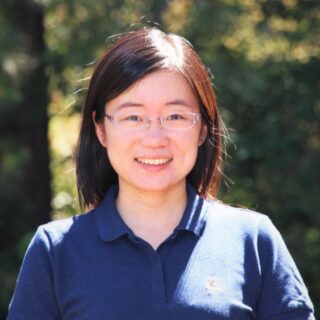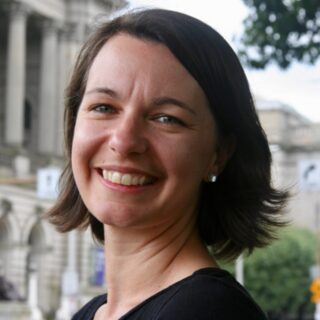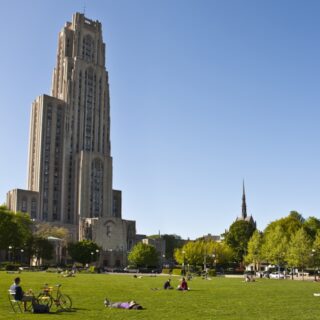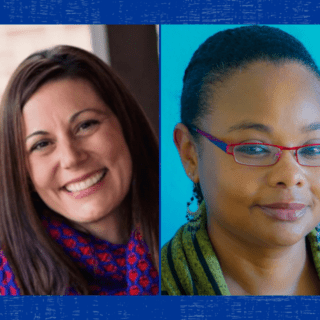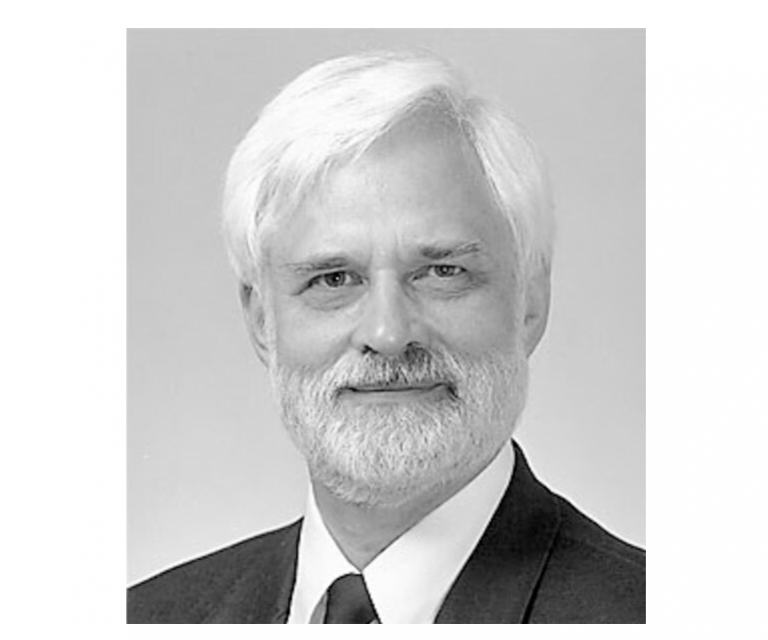
Remembering a “Giant” in the Learning Sciences
James G. Greeno’s legacy of educational research includes contributing to the development of an entirely new field of study—the learning sciences.
The field, which grew exponentially with Greeno’s support, examines the nature of how people learn. Drawing on his training as a cognitive scientist who studies the mind and its processes, Greeno brought in elements of psychology, philosophy, mathematical logic, and anthropology. Among his pioneering ideas is situated learning, a theory which frames learning as a participatory process that incorporates the role of people, culture, and history.
Greeno passed away on September 8, 2020 at the age of 85. He is survived by his wife, Noreen Greeno; two children, John Greeno and Catherine Greeno; and four grandchildren.
“Jim was a remarkable renaissance person who had a real concern with improving education,” recalls Alan Lesgold, the former Renée and Richard Goldman Dean of the Pitt School of Education and a professor emeritus of education, psychology, and intelligent systems.
Lesgold first met Greeno in the late 1960s and later worked with him during two separate tenures at the Pitt School of Education. He describes him as an “Isaac Newton for the world of learning and education” due to his intellectual curiosity and experimentation in real-world settings.
Greeno’s academic career took him all over the country. Over the course of nearly 60 years, he served on the faculty of Stanford University, the University of California-Berkeley, the University of Michigan, and Indiana University. He was also a co-founder and senior research fellow of the Institute for Research on Learning in Palo Alto, California.
Greeno also worked at the University of Pittsburgh on two separate occasions.
Greeno first joined Pitt in the mid-1970s until the mid-1980s as a senior scientist at the Learning Research and Development Center (LRDC) and a professor of psychology. He returned to Pitt in 2003, where he rejoined the LRDC and, up until his death, worked as a visiting professor and adjunct professor in the Pitt School of Education.
Fostering a Culture of Deep Learning
Ostensibly, Greeno’s second stint at the Pitt School of Education was to be a minor retirement project.
In reality, it was a highly productive period in which he had a significant impact on the school — one which continues to this day.
Greeno, who had moved back from Stanford University to be near his children and grandchildren, began co-teaching courses in the school’s PhD program.
The timing couldn’t have been better. The school had started a new doctoral program in Learning Sciences and Policy (LSAP). And here arrives Greeno, one of the canonical figures in the field.
“Jim is a giant in the field of cognitive sciences and learning sciences. He helped us to rethink how to define, how to support, and how to understand conceptions of teaching and learning. He also got us out of the lab and into the places where learning occurs,” says Kevin Crowley, professor and associate dean for faculty and research at the Pitt School of Education.
For about 10 years, Crowley and Greeno co-taught a core learning sciences course in the LSAP PhD program. The experience is one of Crowley’s fondest memories.
“He is such an inspirational person. He is one of the most humane, curious, and reflective people I ever met. The course we taught was often cited by LSAP students as their favorite,” says Crowley.
Ellice Forman, a professor of science education in the Pitt School of Education, says Greeno also provided valuable mentoring support to doctoral students in math and science education.
She co-taught with Greeno a PhD course on learning and cognition in 2014 and 2016. This course emphasized the historical roots of current work in the learning sciences such as the cultural historical theory of Vygotsky, the constructivism of Piaget, and the behaviorist theories by Gagne.
Forman remembers him as a quiet presence in the classroom. However, his words had great effect since he was not only a leading mind in the subject, he also knew the other leading minds, and could make connections between all of the ideas.
“He was such a deep thinker. He built bridges across the chasms between fundamentally different theoretical traditions in the learning sciences,” says Forman.
Lindsay Clare Matsumura, a professor, senior scientist at the LRDC, and co-director of the Institute for Learning, says that Greeno was a role model for other faculty, which amplified his impact across the school.
“He really brought so much wisdom in teaching and his support of students in their journey,” says Matsumura.
His Legacy Continues through His Students
Greeno’s former doctoral students, now professors themselves, remember his kindness and generosity.
“He was a real example of how, in academia, you can be brilliant and a nice person. One does not have to come at the expense of the other,” says Sam Abramovich (PhD ’13), an associate professor at the University at Buffalo, the State University of New York.
Abramovich has a story of where that kindness mattered. When he first met Greeno, they were at a school function and struck up a friendly conversation. As they began talking about the learning sciences, Abramovich proceeded to challenge Greeno on the concepts of the theory of situativity.
“He was super polite, instructive,” recalls Abramovich. “Instead of telling me that I was wrong (which I was), he built me toward a constructive argument. Afterward, my friend was like, ‘Sam, that’s Jim Greeno! He’s one of the originators of the theory.’ But that’s just who Greeno was.”
Peter Wardrip (PhD ’14) and Miray Tekkumru-Kisa (PhD ’13) cherish the level of access Greeno provided to them as PhD students. Both were part of an independent study group where they met weekly with Greeno to have deep discussions on research articles.
“We called it the Greeno Reading Group,” says Tekkumru-Kisa, now an assistant professor at Florida State University’s College of Education. “I always looked forward to those conversations. His intellectual curiosity and deep thinking were a model for all of us.”
Wardrip remembers Greeno for going the extra mile in giving his time. In 2011, when he was a relatively new PhD student, he was set to present a roundtable discussion on data-informed instruction at the American Educational Research Association (AERA) conference in New Orleans. Although Greeno had helped in the work, Wardrip expected he would present alone since it wasn’t customary for people of his stature to participate in these discussions. Nevertheless, Greeno showed up and participated in the roundtable.
His star power had an obvious effect.
“It was the biggest roundtable I was ever a part of. People were overflowing around the table,” says Wardrip, now an assistant professor of STEAM education at the University of Wisconsin-Madison College of Education.
Melissa Gresalfi, a professor of mathematics education and learning sciences and learning environment design at Vanderbilt University’s Peabody College of Education and Human Development, was a PhD student who studied under Greeno at Stanford.
This past year, she co-hosted the International Conference of the Learning Sciences, which generated over 1,000 conference proposals from all over the world.
“It’s a field that Jim helped to build,” says Gresalfi. “His willingness to shift his work along with other people’s views highlighted the need for there to be a new way to think about learning.”
Gresalfi has one memory in particular that stands out about Greeno.
One day, they were collecting data for a research project by filming video interviews in a classroom. Afterward, the normally calm and reserved Greeno remarked, “Isn’t this the best job ever?’”
“I remember thinking, ‘it must be’ if you still feel this way decades into the job. It was clear that he had such a sense of joy and gratitude for the career he chose,” says Gresalfi.
Learn More
The Learning Sciences and Policy program at the Pitt School of Education
Explore all PhD programs at the Pitt School of Education
Visit the Pitt Learning Research and Development Center

